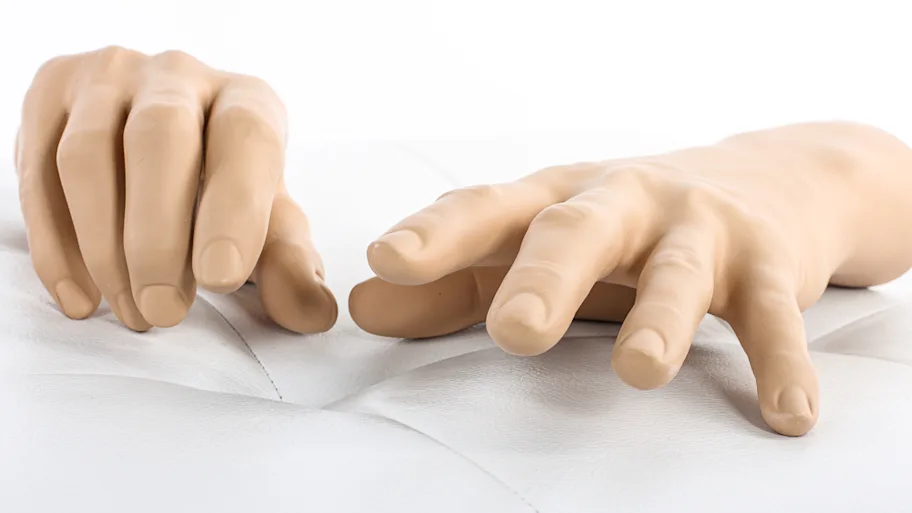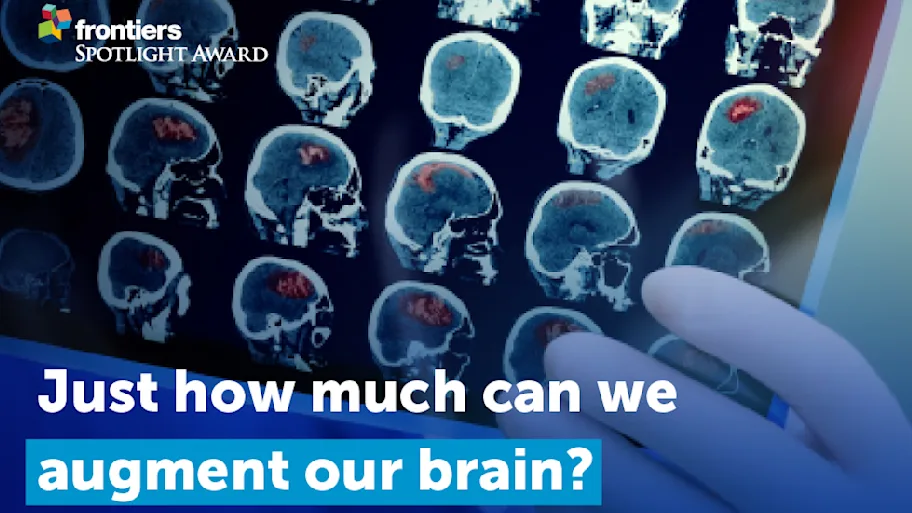
- Science news
- Featured news
- From ghosts to evil genies: How the world experiences terrifying sleep paralysis very differently
From ghosts to evil genies: How the world experiences terrifying sleep paralysis very differently
By Colm Gorey, Frontiers science writer/Dr Baland Jalal, Harvard University and University of Cambridge

Dr Baland Jalal. Image: Dr Bamo Jalal
Dr Baland Jalal has spent years exploring the terrifying phenomenon known as sleep paralysis to find that the sinister entity you see at the end of your bed varies from culture to culture. Writing with Frontiers, Jalal says this has major implications for how it is experienced.
Sleep paralysis is something no one will want to experience. After falling into a deep sleep, you suddenly wake up unable to move a muscle or even scream for help. To make things worse, you feel as if there is someone – or something – either sitting on top of you or looking at you from the end of the bed.
While the experience will only last a short while, it can potentially have long-term implications as it might trigger a fear of falling asleep. Little is known about what exactly triggers sleep paralysis, but researchers across the world have spent much of their careers trying to better understand – and potentially manage – the phenomenon.
One such researcher is Dr Baland Jalal of the Department of Psychology at Harvard University and a visiting researcher at the Department of Psychiatry at Cambridge University in the UK. He obtained his PhD at Cambridge University in the School of Clinical Medicine and was previously a fellow at Harvard and Visiting Scholar at UC San Diego.
Because open access and sharing research is part of Frontiers’ mission, we want to give researchers the voice to express themselves and their research with more creativity and freedom than they otherwise would have in publishing an academic paper.
If you’ve recently published your paper with Frontiers and believe you have a great story to tell, then send an email to press@frontiersin.org with ‘Frontier Scientists’ and your name in the subject line.
What inspired you to become a researcher? Do you have any specific memories that set off a spark?
Early in my career I joined the laboratory of the renowned neuroscientist VS Ramachandran in California – known for his work on phantom limbs. Rama – as we call him – was not only a mentor but like a second father and was someone who instilled in me a genuine love of science.
He also introduced me to other legendary neuroscientists like Oliver Sacks, who inspired me to become a scientist.
I’d also say my own sleep paralysis sparked my scientific curiosity. One morning, not long after graduating from high school, I had an experience that would change the way I saw science. While asleep in my bed, I found myself awake but unable to move or speak. I also had this creepy feeling that there was something sinister in my bedroom. This experience had me intrigued and inspired me to become a researcher to study this mysterious phenomenon.
Can you tell us about the research you’re currently working on?
I have worked on sleep paralysis for more than a decade and my research in 6 countries has exceeded my wildest expectations. It shows that merely your beliefs about the experience can have profound implications.
Sleep paralysis often involve hallucinating ‘ghosts’ and are interpreted differently around the world. Our early study in Egypt found that sleep paralysis is often thought to be caused by an evil ‘genie’; a supernatural creature that sometimes kills its victims.
In Italy, we found that some interpret it as an assault by witches or giant cats. In Turkey, spirit-like creatures – called Karabasan – may cause sleep paralysis, while in Denmark we found that people mainly attribute sleep paralysis to factors like stress.
Notably, our work has illustrated that these cultural explanations can have a major impact on how people experience sleep paralysis. When directly comparing sleep paralysis in Egypt and Denmark, we found that Egyptians fear it much more than Danes do, and believe the episodes last longer. Curiously, sleep paralysis occurs 3 times more often among Egyptians. Beliefs about it appears to have dramatically shaped their experience.
We found a similar pattern among Italians who also have striking cultural beliefs. Like Egyptians, Italians have sleep paralysis more frequently, with prolonged paralysis and great fear of the experience. Cultural beliefs about sleep paralysis seems to heighten symptoms – a form of mind-body interaction!
‘In Italy, we found that some interpret it as an assault by witches or giant cats’
Dr Baland Jalal
In short, it seems those who fear sleep paralysis are also more likely to experience it. So once sleep paralysis is interpreted through the lens of fear – as a ‘bogeyman attack’, let’s say – it leads to more anxiety, unwanted night time awakenings, and more sleep paralysis.
I call this vicious cycle the ‘panic-hallucination model; (first proposed in Frontiers in Psychology), continues to feed into itself until sleep paralysis becomes chronic, prolonged and potentially traumatizing. Indeed, our recent work raises the possibility that sleep paralysis, if accompanied by certain beliefs, is not just terrifying but might also lead to psychopathology.
In addition to this work, I have proposed a neuroscientific theory for why people see ghosts during sleep paralysis and designed a direct treatment for the condition called ‘meditation-relaxation therapy’, or MR therapy for short.
Despite sleep paralysis being known for some time, there are no empirically-based treatments for sleep paralysis. With colleagues in Italy we recently did – to my knowledge – the first treatment study for sleep paralysis.
In a pilot trial in patients with narcolepsy, we found that after 8 weeks of using the treatment there was a 50% reduction in sleep paralysis episodes. This is promising but we now need to follow this up with research in large trials to be sure of its efficacy.
In your opinion, why is your research important?
Sleep paralysis can be terrifying. Our work illuminates how beliefs impact the experience to make it worse which has therapeutic implications as one could work towards correcting fearful beliefs.
MR therapy may help sleep paralysis sufferers around the world by giving them a tool they can apply during the attack.
Are there any common misconceptions about this area of research? How would you address them?
Rather than misconceptions, I would say there is a general lack of knowledge about sleep paralysis, even among clinicians. Some doctors might even confuse the uncanny hallucinations with psychotic episodes.
What are some of the areas of research you’d like to see tackled in the years ahead?
More research should explore therapies for sleep paralysis; for example, therapies that can be applied during the attack and delivered remotely on smartphones to be more accessible to people.
How has open science benefited the reach and impact of your research?
Open science has benefitted me immensely. It allows the general public and students to easily access my work and benefit from it.
If you have recently published your research with Frontiers and believe you have a story to tell, then you might feature as part of our new Frontier Scientists series! Send an email with the subject line ‘Frontier Scientists’ and your name to press@frontiersin.org , as well as details on what your most recent research was about.






